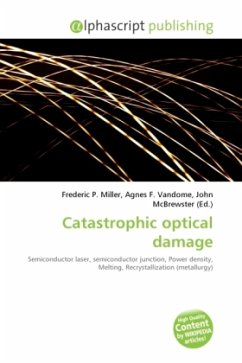High Quality Content by WIKIPEDIA articles! Catastrophic optical damage is a failure mode of high-power semiconductor lasers. It occurs when the semiconductor junction is overloaded by exceeding its power density and absorbs too much of the produced light energy, leading to melting and recrystallization of the semiconductor material at the facets of the laser. This is often colloquially referred to as "blowing the diode." The affected area contains a large number of lattice defects, negatively affecting its performance. If the affected area is sufficiently large, it can be observable under optical microscope as darkening of the laser facet, and/or as presence of cracks and grooves. The damage can occur within a single laser pulse. Catastrophic optical damage is one of the limiting factors in increasing performance of semiconductor lasers. It is the primary failure mode for AlGaInP/AlGaAs red lasers. Short-wavelength lasers are more susceptible to COD than long-wavelength ones. The typical values for COD in industrial products range between 12-20 MW/cm2.
Bitte wählen Sie Ihr Anliegen aus.
Rechnungen
Retourenschein anfordern
Bestellstatus
Storno








